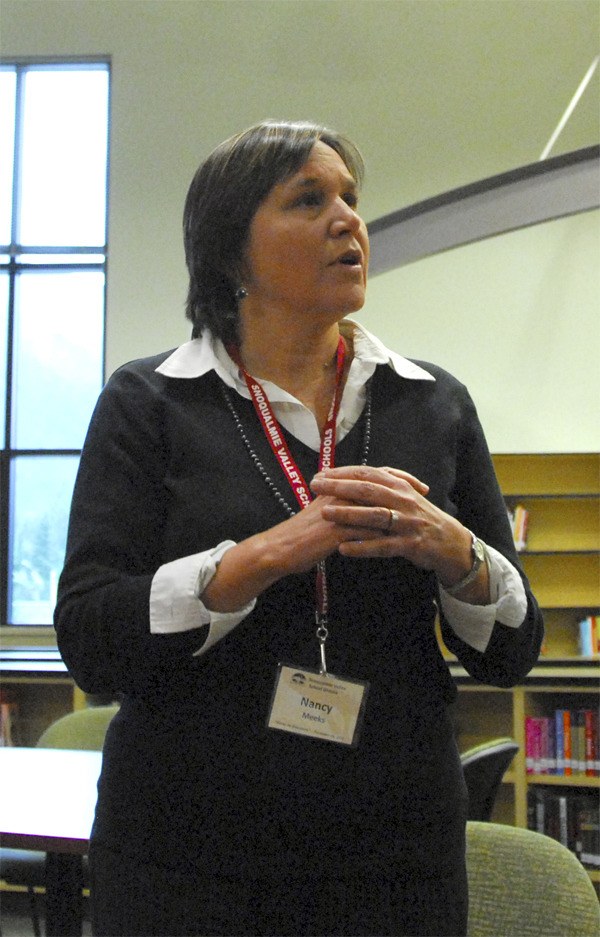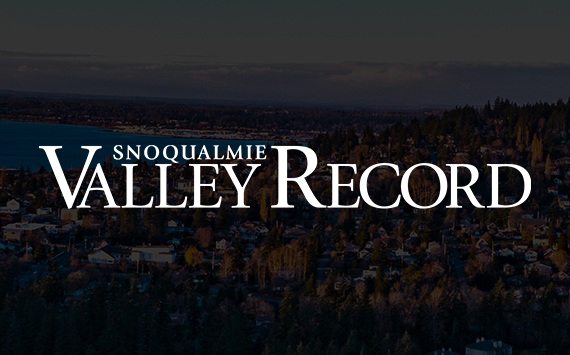The face of Snoqualmie Valley School District’s compliance with state anti-bullying requirements is not Nancy Meeks, and she’d be first to say so.
Instead, Meeks said the school district really addresses harassment, intimidation and bullying issues at the level of each individual school. “The real work is not with me, it’s with the buildings,” she said. Although she is officially the school compliance officer for the state-mandated policy 3207, she said “it’s the principals and the counselors in the buildings who play the biggest role.”
Last year, all state school districts were required to adopt and implement an anti-bullying policy by August 1, 2011. The district has had harassment and bullying policies in place since the early 1990s, Meeks said, but 3207 was updated earlier this year to match the model put forth by the Office of the Superintendent for Public Instruction (OSPI).
Part of the model calls for a compliance officer, whose job it is to ensure that the district adheres to its own policy, and to handle any complaints that are not resolved within the individual schools. Meeks, who works in Student Services, primarily with special education needs, was asked to don the compliance officer hat, as well.
Thanks to initiatives like Mount Si High School’s PRIDE campaign, and principals’ and counselors’ frank conversations with students at the start of each school year about what bullying is and how to report it, Meeks said her job has mainly been limited to keeping the district policies current, and communicating those updates with teachers and administration.
Bullying hasn’t been eliminated, of course, but Meeks said the principals and counselors at each school are able to quickly address any incidents that occur.
“They do a thorough investigation of any allegation that happens at the building level,” she said.
That means interviewing all of the students involved, any students or staff who may have seen the event and, if a security camera was in place, reviewing any video footage of the incident. A principal generally has final authority regarding the nature of the incident and any punishment to be applied, Meeks said, but cases can be escalated to her for review. That hasn’t happened yet this year, she said.
Meeks praises the initiative of administration and staff in making student safety a priority, citing the Mount Si Tipline as an example. This online reporting tool was launched last January, by then principal Randy Taylor. Students can visit the website https://mountsi.schooltipline.com, or send a text message to report bullying incidents, threats, depressed students, and other student safety issues. The website is intended to provide anonymity if students request it, but students claim that the district can trace the IP address of the computer used to make a report. The company insists the system is anonymous (see related story, page 3).
There have also been some challenges with promoting the information about the Tipline. Until the high school launched its new website earlier this year, any links to the Tipline were difficult to find, and links to it from other district Web pages simply didn’t work.
Starting this school year, Meeks said, “I think there’s a lot of work that the student body does to let kids know,” such as posters in the hallways, and a prominent link on the new website.
Each school building is promoting school safety and respect in a variety of ways, which Meeks refers to on the district website. For a list of programs at the elementary, middle or high school levels, visit www.svsd410.org/parents/harassment_bullying/prevention_support.asp.
“We’re going to do what it takes to keep our kids safe,” Meeks said.
Sidebar: Bullying response
Snoqualmie Valley schools have a seven-step system for addressing safety concerns
• Step 1: Students or parents may file a report about severe or persistent harassment, intimidation or bullying.
• Step 2: Staff who receive the report attempt to resolve the problem right away.
• Step 3: Reports are investigated; any student may have a trusted adult with them throughout the report and investigation process.
• Step 4: After completion of the investigation, the district will decide on corrective measures for the aggressor.
• Step 5: The targeted student and parents have the right to appeal the corrective measures.
• Step 6: Discipline/corrective action is taken against the aggressor.
• Step 7: Students who have been bullied are given support to remedy the situation.
Students and families should use the district’s complaint and appeal procedures as a first response to safety issues. But parents may also consider taking their complaint to a state or federal agency, including:
• Office of the Education Ombudsman
• OSPI Equity and Civil Rights Office
• Washington State Human Rights Commission
• Office for Civil Rights, U.S. Department of Education, Region IX
• Department of Justice Community Relations Service
• OSPI Safety Center



